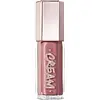What's inside
What's inside
 Key Ingredients
Key Ingredients

 Benefits
Benefits

 Concerns
Concerns

 Ingredients Side-by-side
Ingredients Side-by-side

Polybutene
Diisostearyl Malate
EmollientBis-Diglyceryl Polyacyladipate-2
EmollientOctyldodecanol
EmollientCaprylic/Capric Triglyceride
MaskingPolyethylene
AbrasiveSilica
AbrasiveButyrospermum Parkii Butter
Skin ConditioningEthylhexyl Palmitate
EmollientPhenoxyethanol
PreservativeTocopherol
AntioxidantCetearyl Alcohol
EmollientParfum
MaskingTribehenin
EmollientHelianthus Annuus Seed Oil
EmollientCera Microcristallina
Emulsion StabilisingRetinyl Palmitate
Skin ConditioningSorbitan Isostearate
EmulsifyingMica
Cosmetic ColorantLactic Acid
BufferingPalmitoyl Tripeptide-1
Skin ConditioningCitric Acid
BufferingTitanium Dioxide
Cosmetic ColorantCI 19140
Cosmetic ColorantCI 45410
Cosmetic ColorantCI 73360
Cosmetic ColorantCI 15850
Cosmetic ColorantCI 77499
Cosmetic ColorantPolybutene, Diisostearyl Malate, Bis-Diglyceryl Polyacyladipate-2, Octyldodecanol, Caprylic/Capric Triglyceride, Polyethylene, Silica, Butyrospermum Parkii Butter, Ethylhexyl Palmitate, Phenoxyethanol, Tocopherol, Cetearyl Alcohol, Parfum, Tribehenin, Helianthus Annuus Seed Oil, Cera Microcristallina, Retinyl Palmitate, Sorbitan Isostearate, Mica, Lactic Acid, Palmitoyl Tripeptide-1, Citric Acid, Titanium Dioxide, CI 19140, CI 45410, CI 73360, CI 15850, CI 77499
Triisostearyl Citrate
EmollientHydrogenated Polyisobutene
EmollientButyrospermum Parkii Butter
Skin ConditioningMicrocrystalline Wax
Emulsion StabilisingPunica Granatum Sterols
Skin ConditioningOctyldodecanol
EmollientPolyethylene
AbrasiveDisteardimonium Hectorite
StabilisingRicinus Communis Seed Oil
MaskingCocos Nucifera Oil
MaskingAloe Barbadensis Leaf Extract
EmollientPersea Gratissima Oil
Skin ConditioningPhytosterols
Skin ConditioningLinolenic Acid
CleansingLinoleic Acid
CleansingHydrogenated Castor Oil
EmollientLauryl PCA
HumectantSodium Hyaluronate
HumectantCaprylyl Glycol
EmollientOleic Acid
EmollientLecithin
EmollientHexylene Glycol
EmulsifyingPhenoxyethanol
PreservativeTetrahexyldecyl Ascorbate
AntioxidantTocopheryl Acetate
AntioxidantMica
Cosmetic ColorantCI 77891
Cosmetic ColorantCI 77491
Cosmetic ColorantCI 77492
Cosmetic ColorantCI 77499
Cosmetic ColorantCI 77163
Cosmetic ColorantCI 42090
Cosmetic ColorantCI 75470
Cosmetic ColorantCI 15850
Cosmetic ColorantCI 45380
Cosmetic ColorantCI 45410
Cosmetic ColorantCI 73360
Cosmetic ColorantCI 17200
Cosmetic ColorantCI 19140
Cosmetic ColorantCI 15985
Cosmetic ColorantTriisostearyl Citrate, Hydrogenated Polyisobutene, Butyrospermum Parkii Butter, Microcrystalline Wax, Punica Granatum Sterols, Octyldodecanol, Polyethylene, Disteardimonium Hectorite, Ricinus Communis Seed Oil, Cocos Nucifera Oil, Aloe Barbadensis Leaf Extract, Persea Gratissima Oil, Phytosterols, Linolenic Acid, Linoleic Acid, Hydrogenated Castor Oil, Lauryl PCA, Sodium Hyaluronate, Caprylyl Glycol, Oleic Acid, Lecithin, Hexylene Glycol, Phenoxyethanol, Tetrahexyldecyl Ascorbate, Tocopheryl Acetate, Mica, CI 77891, CI 77491, CI 77492, CI 77499, CI 77163, CI 42090, CI 75470, CI 15850, CI 45380, CI 45410, CI 73360, CI 17200, CI 19140, CI 15985
 Reviews
Reviews

Ingredients Explained
These ingredients are found in both products.
Ingredients higher up in an ingredient list are typically present in a larger amount.
This ingredient is also known as shea butter. It is an effective skin hydrator and emollient.
Emollients help soothe and soften your skin. It does this by creating a protective film on your skin. This barrier helps trap moisture and keeps your skin hydrated. Emollients may be effective at treating dry or itchy skin.
Shea butter is rich in antioxidants. Antioxidants help fight free-radicals, or molecules that may harm the body. It is also full of fatty acids including stearic acid and linoleic acid. These acids help replenish the skin and keep skin moisturized.
While Shea Butter has an SPF rating of about 3-4, it is not a sunscreen replacement.
Shea butter may not be fungal acne safe. We recommend speaking with a professional if you have any concerns.
Learn more about Butyrospermum Parkii ButterCi 15850 is the pigment color red. It is an azo dye and created synthetically.
Azo dyes need to be thoroughly purified before use. This allows them to be more stable and longer-lasting.
This ingredient is common in foundations, lipsticks, and blushes. This color is described as brown/orangey red.
It has many secondary names such as Red 6 and Red 7. According to a manufacturer, Red 6 usually contains aluminum.
Learn more about CI 15850CI 19140 is also known as Tartrazine. Tartrazine is a synthetic dye used in cosmetics, foods, and medicine to add a yellow color.
Tartrazine is created from petroleum and is water-soluble.
Some people may experience allergies from this dye, especially asthmatics and those with an aspirin intolerance.
Learn more about CI 19140CI 45410 is a synthetic red-pigment and dye.
It often goes by both Red 28 or Red 27; manufacturers label both ingredients as CI 45410.
This dye is commonly found in makeup because it imparts a vivid color. Some types of this dye change color based on pH level and interaction with moisture:
Your skin has a natural pH of around 4.5 - 5.5.
According to the FDA, CI 45410 is not permitted for use in eye products.
Red 27 is a flourescein dye and commonly used as a fluorescent tracer in medicine.
Learn more about CI 45410Ci 73360 is a synthetic red-pink dye.
Ci 77499 is also hydrated iron III oxide. It is created from mixing red and black iron oxides. This helps give shades of darkness to a product.
Iron III oxides are classified as inorganic chemicals for coloring.
Mica is a naturally occurring mineral used to add shimmer and color in cosmetics. It can also help improve the texture of a product or give it an opaque, white/silver color.
Serecite is the name for very fine but ragged grains of mica.
This ingredient is often coated with metal oxides like titanium dioxide. Trace amounts of heavy metals may be found in mica, but these metals are not harmful in our personal products.
Mica has been used since prehistoric times throughout the world. Ancient Egyptian, Indian, Greek, Roman, Aztec, and Chinese civilizations have used mica.
Learn more about MicaOctyldodecanol is a fatty alcohol. It is primarily used to enhance the texture of products.
As an emulsifier, Octyldodecanol helps prevent the oils and waters from separating. It also prevents ingredients from creating foam when shaken.
Octyldodecanol is created by reducing fatty acid to an alcohol.
Due to its high molecular weight, it does not get absorbed into the skin.
Learn more about OctyldodecanolPhenoxyethanol is a preservative that has germicide, antimicrobial, and aromatic properties. Studies show that phenoxyethanol can prevent microbial growth. By itself, it has a scent that is similar to that of a rose.
It's often used in formulations along with Caprylyl Glycol to preserve the shelf life of products.
Polyethylene is a synthetic ingredient that helps the skin retain moisture. It is a polymer.
It is also typically used within product formulations to help bind solid ingredients together and thicken oil-based ingredients. When added to balms and emulsions, it helps increase the melting point temperature.